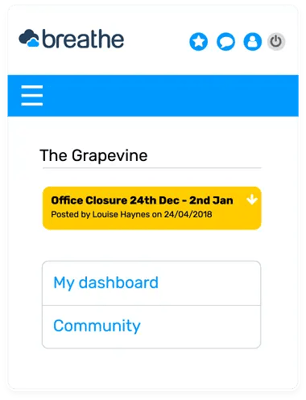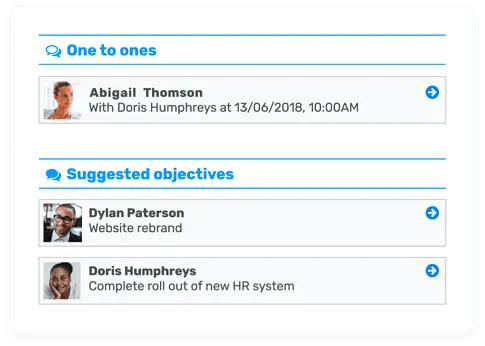Employee Self-Service HR Software
Help your employees to help themselves

Save your business valuable time while putting control in the hands of your team members with Breathe’s HR self-service functionality. Its simplicity tames the HR process, while its ease of use ensures your employees will be happy to work with it.
HR self-service software is all about empowering your staff to take care of HR admin tasks themselves. This means accessing important HR documentation, booking annual leave, logging sick days, and more, all from one user-friendly portal.
.webp?width=575&height=387&name=power-to-manage-HR%20(1).webp)

If a team member needs to update their personal information, it’s as easy as logging in from their phone or computer, changing their details, and clicking save. Thanks to Breathe being a cloud-based HR solution, all this data is kept centrally and synced across platforms, so you’re always in the know.
Breathe lets your employees recognise each other’s hard work to boost team morale and keep everyone motivated. In just a few clicks, colleagues can send each other kudos and, because anyone in the company can give kudos, it’s easy to see who’s really making a difference in your workplace.


Within Breathe, employees can book holiday and access a complete overview of when their colleagues are on leave via the live central calendar. Because Breathe is transparent about who’s off when, there’s no confusion or misunderstanding if a holiday request is rejected. The central calendar also makes tracking leave across your company a breeze.
With everything stored securely in the cloud, you and your team can access Breathe from anywhere, without the need to download an application. Breathe can be used from any web browser and has been designed to look beautiful from any screen. It’s so effortless to use, you’ll be up and running in moments.
If you can get online, you can access your HR and personnel data – easily and securely.
Easily monitor absences and sickness with the manager dashboard, central calendar and reports functionality.
Start using Breathe today – for free – and discover the benefits of self-service hr software and putting power in your employees' hands.
%20(1).webp?width=400&height=450&name=smiling%20woman%20in%20blue%20dress%20(1)%20(1).webp)
%20(1).webp?width=400&height=450&name=smiling%20woman%20in%20blue%20dress%20(1)%20(1).webp)